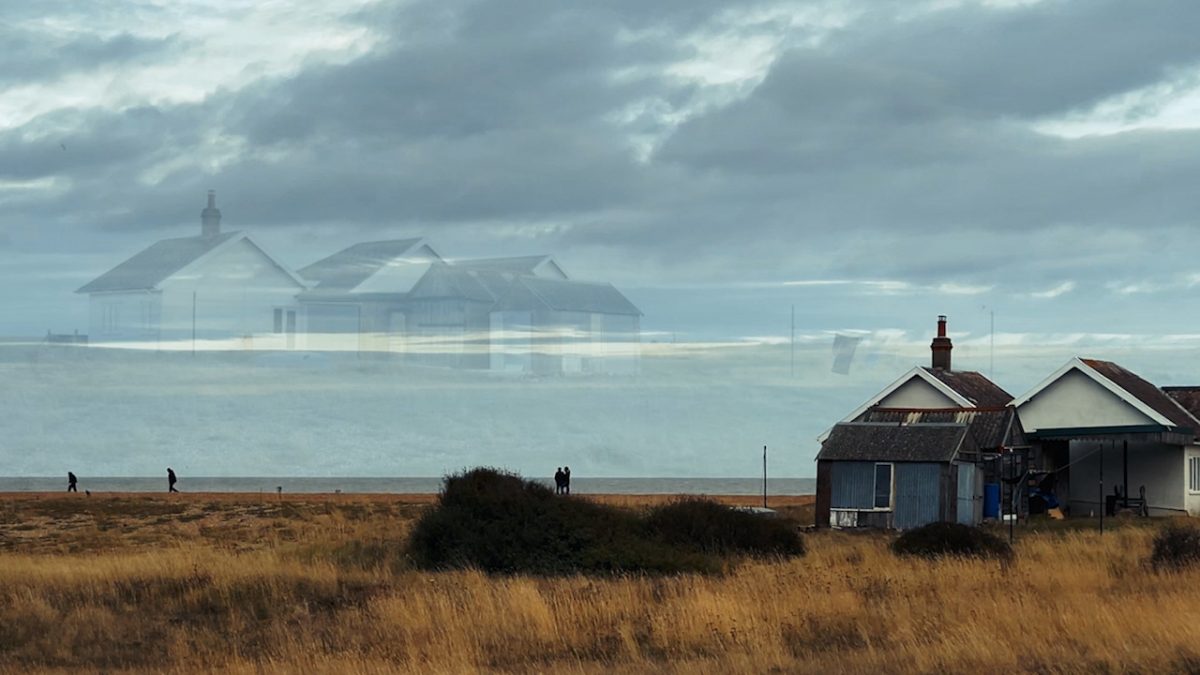“I am interested in how the materiality of an image can support its meaning, the tearing or disintegration of paper and marks alluding to
Catherine Anyango Grünewald, Live, Moments Ago (The Death of Mike Brown) (n.d) catherine-anyango.com.
the criminal and emotional disruption of public space. The police violence in America is happening almost too fast to comprehend and
almost certainly too fast to document. In a series that started with the death of Trayvon Martin in 2012, I have been documenting the last
image in the victims of police shootings lives. In this film the drawn footage is worked and reworked until the figures merge with the
landscape and the paper is destroyed. There is a sense of burning, referencing lynching and also foreshadowing the subsequent riots.”
This section looks at work which attempts to follow the footsteps of the Lumière Brothers in using animation to observe and respond to the world through both the showing of actuality within animation and the presentation of the underlying process of becoming animation.
It looks at artists and experimental animators who have focused on the quality of animation existing in time and place. Artists concerned with making animation that is self-aware, exploring ways in which an audience’s perception of time can be manipulated and ways in which animation can relate and respond directly to the context in which it is made. In most cases, the purpose of these animation artists has been to establish an ethical dimension to the making of animation beyond entertainment and spectacle.
Project 1:
Process Document
“When we look at something and see the particular shape of it we are
only looking at it’s after-life. It’s real life is in the movement by which it
got to be that shape.”
Len Lye, Figures of Motion: Selected Writings (1985) OUP Australia and New Zealand
All moving image involves different types of time:
- ‘narrative time’ – the amount of time that is spanned within the story or piece
- ‘discourse’ or ‘viewing time’ – the amount of time it takes to experience a story through reading or watching it unfold
- ‘production time’ – the time it took to produce the piece.
The latter, ‘production time’ is hidden from the audience in most animations. This project focuses on animation artists who “use the process of animation not as a means of exposition, but as a means of discovery. Qualities of time, material, light and place can be explored through the making of the animation. The resulting animation thereby becomes a document of the process and the viewer is presented with a revelatory record of its own becoming.”
There is an extensive range of inventive techniques that artist animators have devised in order to draw an audience’s attention to production time and production time can become a core element of the animation itself e.g. changes in light, wear and tear, energy, accumulation or even the animator herself being visible.
E3.1 Shadow Wall Animation LIght Study
When included in the frame of an animation, natural light highlights the difference between production time and viewing time. This is most often seen through the flicker in time-lapse video. Unlike time-lapse video, animation is not constrained by strictly set intervals of time between shots. The duration between each shot can be manipulated so that time can be seen to slow down or speed up. Using basic principles of animation, shadows can be made to hesitate or race, reflections made to boil or linger.
E3.2 Gestures and process of movement: Sparrowhawk
This project compares what can be shown in video/moving image compared to still photography/drawing.
E3.3 Edges in Time: Material Accumulation, Erosion and Trace
When the audience notices the presence of the animator through, for example,
the tactile fact of a drawing on paper, this is a distancing effect, much like
noticing the strings of a puppet. It highlights the craft of the animator, not unlike
the use of ‘gesture’ in painting. Furthermore, the viewer is made aware of the
animator through production time; the build-up of layers of a substance or
through the life and durability of the material itself.
E3.4 The Squirrel: Rotoscoping
‘Rotoscoping’. This is the process of frame-by-frame tracing of recorded movements of actual humans or events. There are several ways in which filmed or live media can be used as a reference point for the creation of digital animated movement: motion capture, interpolated rotoscoping, mattes and frame by frame rotoscoping. However, this is not an easy option. It limits possibilities of imagining new narratives and worlds that do not have accessible reference material. ‘Real world’ actors and objects do not have an outline so the result is often of a piece of animation that is clearly traced in a way that detracts from the original footage, rather than adding to it, with the use of lines that are either too flaccid or too stiff.
Research Task 3.1: Evaluating Rotoscoping
Project 2:
Animated places
Full post:
E3.6 Fragments Walking: Document a Process
Assignment 3:
Colours of Shingle: Animating in Situ
Research: Landscape animators
Full post:
Assignment 3: Colours of Shingle: Animating in Situ
Video padlet:

